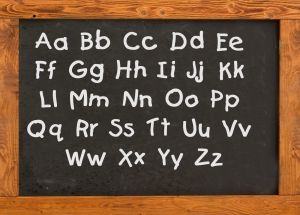By David Wolf, Attorney
Published by Child Injury Lawyer Network

In schools throughout the nation, children should be supervised in a safe learning environment. The amount and type of supervision will depend on the number of factors including the following:
Class-Size. Many states have a class-size limits in public schools. In order to comply with state standards, the school is limited as to the number of children that can be enrolled in a particular class.
Teacher / Staff to Student Ratio. In addition, many states have standards as to the staff to child ratio in conjunction with the class size limitations. Some states have specific requirements as to the number of staff members, teachers, and/or aides per student per classroom. In those States where there are no specific limits, there should be a sufficient amount of staff so that the children are reasonably and appropriately supervised.
Needs and Ages of Students. Another factor that will determine the level of supervision and number of teachers / staff members needed is the ages and needs of the students. A group of honors high school students will require less supervision than the group of elementary special needs students.
School Policies and Procedures. In many schools, there are school specific policies and procedures that should be followed as to staffing, supervision, classroom management, and school activities and extra-curricular activities. It is important for a school to follow the State, County, and individual school policies and procedures.
Individualized Education Plans. For special needs / special education students, there should be an IEP (Individualized Education Plan) in place for each child. The IEP should detail the special needs of the student along with the staffing and personnel required to meet the needs of the student. The IEP should be followed both for the education and the safety of the special needs child.
When a child is injured at a public school, a parent may be able to pursue a legal claim or case against the school and / or school district for the damages associated with the child’s personal injuries. Most States have a set of laws in place referred to as Sovereign Immunity laws. These laws set forth the mode, manner, procedure, and limitations as to cases or claims against government entities including but not limited to States, Cities, Counties, Schools, and School Districts. In some States, the proof of simple negligence is not enough to support a legal case or claim against the school or school district. Some States require the showing of recklessness or a pattern of misconduct on the part of the teacher, school, and / or school district.
Because of the complexities of personal injury cases or claims involving schools and school districts, it is often helpful for parents to contact a Child Injury Lawyer for advice, consultation, and legal representation. When a child is injured, there may be a viable claim for damages / compensation for medical bills. The four elements of a case against a school or school district are the following:
1. Duty (as defined by Statute, Regulations, School Board Policies & Procedures);
2. Breach of Duty;
3. Causation; and
4. Damages.
The book titled – The ABCs of Child Injury – Legal Rights of the Injured Child – What Every Parent Should Know – has chapters on School Injuries, Day Care Center Injuries, Playground Injuries, and other topics. You can get this book for free at The ABCs of Child Injury.
 Child Injury Lawyer Blog
Child Injury Lawyer Blog

